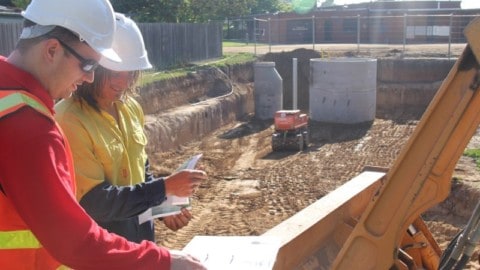A $130 million molybdenum (moly) processing plant is being constructed at Newcrest Mining’s Cadia mine in New South Wales. The plant will extract moly from the mine’scopper concentrate stream to produce a 50 per cent moly concentrate in dry powderform, with an anticipated production of 4.1 million pounds a year. Construction began in February 2020, with commissioning starting in March 2021 and first commercial production expected in the September quarter. Here, we take a look at how the processing plant operates and the equipment used.
Moly is a silvery white metal used to enhance strength, prevent corrosion and reduce brittleness in steels and superalloys, as well as for
lubricants, fertilisers and pigments. While it is sometimes mined as a primary product, it is most commonly recovered as a by-product or co-product of copper or tungsten mining.

Moly processing at Cadia
Newcrest will produce moly extracting it from the copper concentrate stream prior to it being pumped back to Blayney. Moly project manager, Malcolm McPhan, said, “We’re literally tapping into the pipeline that runs to Balyney.
“We divert copper concentrate from the pipeline on its way to Blayney to the moly plant where we extract the moly via floatation process, then we pump it back into that pipeline and send it on its merry way to Blayney.”
The small floatation plant is made of a series of floatation cells, thickeners, a grinding mill, dryer, scrubber, bagging plant and instrumentation to control it all. The level of control and automation provided is world-class to optimise recoveries and concentrate grades.
At nameplate capacity, it is expected it will generate an additional revenue stream of about $45 million per annum. The plant was designed using the latest intelligent 3D modelling software which provided insights throughout the design process and was expected to offer substantial benefits over conventional packages during construction and commissioning.
The project was expected to employ 140 people during construction and about 15 full-time roles when operational.

Cadia’s new Molybdenum Plant under construction. Image: Newcrest Mining.
Moly flotation circuit
Copper and moly are often found together as sulfides, which in solution will float or sink with the right combination of chemicals and gas bubbles (froth flotation).
The sulfide ores are separated from gangue (waste) material, then from each other, by froth flotation. This separation and concentration of copper and moly is called the coppermoly flotation circuit, and is made up of a number of steps.
Various equipment is used throughout this process, depending on project needs and circuit design, but can include sludge pump skid, underflow pump skid, sand pump, diaphragm pump, rotary vacuum filter, flotation cell, SAG mill, ball mill, cyclone and spiral screen.
Grinding
Grinding mills separate the ore from the gangue material, such as silica and organics, and reduce it to an optimal size for flotation. In this step a rod or ball mill is used and arranged with special non-sliming features like a peripheral discharge or large diameter discharge trunnion opening to prevent choking and provide greater grinding flexibility.
Any particles that are oversized will be caught by fine screens and transported back to the mill for regrinding, this can be done via a bucket elevator, sand pump or spitzkasten. Once particles are fine enough, water mixes in to form slurry to help in the transportation and separation of the solids.
Bulk flotation
The flotation stage consists of multiple steps, usually running through rougher flotation cells, then cleaner column cells, and often scavenger cells which work together to give a high total yield of the bulk ore. The regrind circuit usually consists of a closed-circuit steel head ball mill with a flotation cell and spiral classifier.
The flotation cell helps remove the freed mineral coming from the mill. The unit cell discharge is then transported to a heavy-duty spiral classifier which separates it into the fine flotation feed and the coarse
regrind product.
The standard rougher tailings can then go to the scavenger cells which pull out the last trace of mineral. The product is then subjected to two or three stages of cleaner flotation to produce a final flotation concentrate.
Thickening/dewatering
At this stage, a high rate thickener dewaters most of the coppermoly concentrate before further separation occurs. The moly flotation circuit has similar groups of flotation cells with chemicals to float the moly concentrate and settle out the copper concentrate.
Here, the less dense ore rises in the froth to be collected, while the gangue sinks to be discarded. Flotation separates the metallic minerals from the gangue this way and separates molybdenite from copper sulphide.
High rate thickeners are then used to thicken each of the copper and moly concentrates, and a vacuum drum (or other) filter dewaters the concentrates further before refining or storing until sale.
Tailings
The gangue (waste) from the rougher and scavenger cells flows to a tailings thickener to recover water for the process. Filters dewater these tailings further, or they are stored in a tailings pond.

Design of the proposed Molybdenum Plant at Cadia. Image: Newcrest Mining.


















